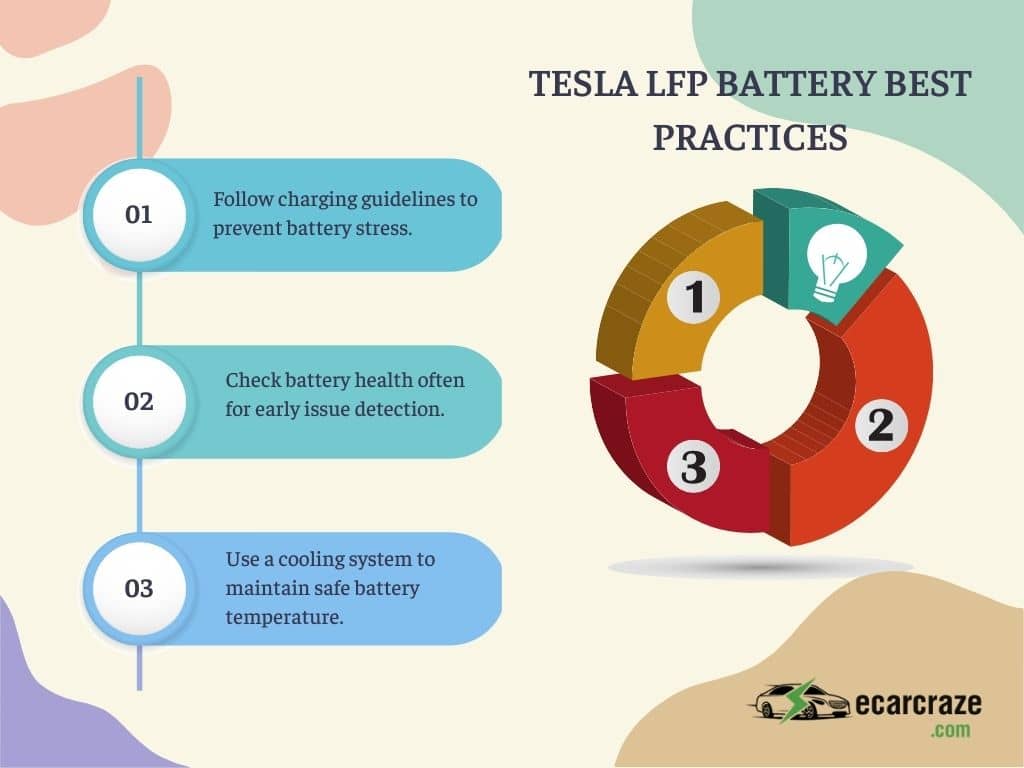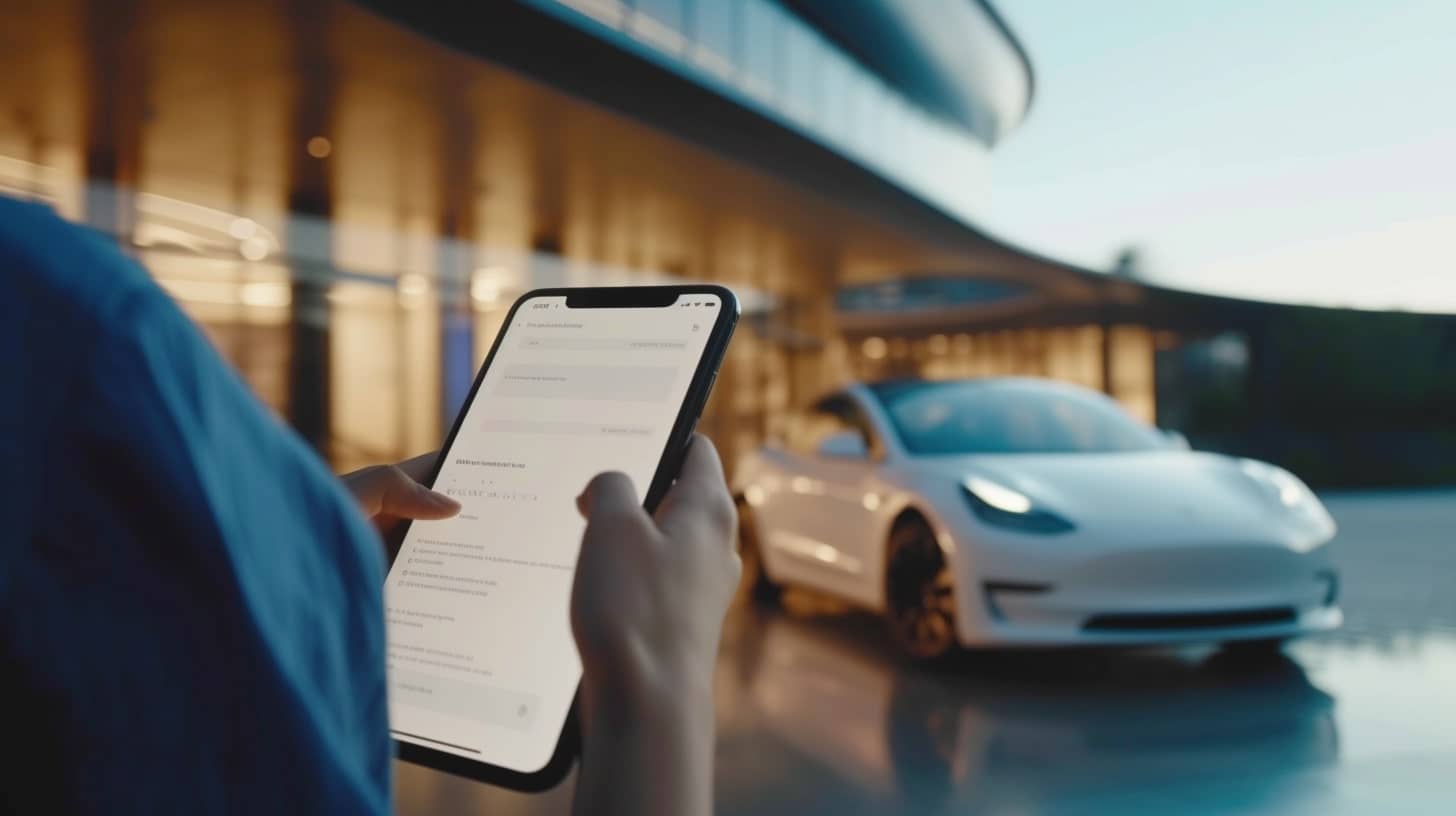Tesla’s lithium-ferro-phosphate (LFP) batteries, like all rechargeable batteries, can experience degradation over time.
So, what are the reasons behind Tesla’s LFP battery degradation? Aging, high temperature and the number of cycles for charging and discharging cycles are the ones that need to be considered for its degradation. Similarly, how deeply the battery is discharged and the charge rate plays a valuable role here.
Nevertheless, you will never be able to minimize the degradation of LFP batteries if you don’t know the reasons in depth. Don’t worry, as we will cover them here, along with how you can maintain and extend your Tesla’s LFP battery. Let’s get started.
Reasons Behind Tesla’s LFP Battery Degradation
Tesla has promised us that these batteries are meant to last for the life of the vehicle and provide a warranty for it. Since it happens gradually, you won’t realize it until you compare the stats between year 1 and year 3.
So, if you are interested in minimizing the degradation of your LFP battery, then knowing the reasons behind degradation is essential. Here they are;
Aging
Like all batteries, LFP batteries tend to degrade naturally. It primarily happens because the chemical composition of the cells can change, leading to a decrease in performance. Well, this is one of those reasons you don’t have any control over. It is meant to happen no matter what.
However, the impact is quite small compared to other factors that we are going to talk about below. Moreover, you have control over the reasons mentioned below.
High Temperature
At high temperatures, the chemical reactions within the battery accelerate, causing the electrolyte to degrade faster. This degradation can lead to a decrease in the battery’s capacity.
High temperatures can cause the battery to enter a state of thermal runaway, which causes the battery to vent gas. Consequently, a loss of electrolyte and a decrease in the battery’s capacity is seen.
If you’re noticing fast battery drain while driving your Tesla, explore our comprehensive guide on preventing and resolving the issue of rapid battery depletion.
Number Of Cycles For Charging And Discharging Cycles
Assume that you put the charger in your Tesla when the battery was 60% charged and removed it when the battery reached 95%. Here is an illustration of a single charging and discharging cycle.
The number of charging and discharging cycles plays a small role in your Tesla’s battery health. As the number of cycles increases, the battery’s chemistry changes. It can lead to the formation of dendrites and other harmful structures that can reduce the battery’s efficiency.
However, it’s important to let you know that the impact is quite small in LFP batteries. This is why a renowned and reliable company like Tesla chose Lithium Ferro Phosphate batteries in their electric vehicles.
Depth Of Discharging (DOD)
When the battery in your electric car is only 3% or 4% of the way down, charging it is regarded as a very deep discharge. Conversely, it is considered a mediocre depth of discharge when you recharge your battery when it has 50% of its remaining capacity left. That should make the meaning of the depth of discharge (DOD) clearer.
Deep discharge of an LFP battery can lead to degradation of the lithium-iron chemistry used in the battery. The lithium ions may become unstable when the battery is discharged to a low state of charge.
As a result, it harms the battery’s internal parts. This may cause the battery’s internal resistance to rise and its capacity to drop.
Charge Rate
By charge rate, we mean how fast you are charging your Tesla LFP battery. Well, this is a feature of Tesla vehicles that lets you charge your Tesla from 10% to 80% within 30 minutes.
When you are on the go, you will come across Supercharger Stations that only let you charge your Tesla quickly. These are called superchargers because they are equipped with fast-charging capabilities.
There’s nothing you can do if you charge at Supercharger stations, as it will fast charge by default. So avoid charging outside as much as you can.
On the other hand, for home charging, there are built-in charging settings that allow you to adjust the charging speed. You can usually find these settings in your device’s settings under “Battery,” where you can adjust between normal charging and fast charging. So always keep it in normal charging mode.
Issues With Fast Charging
There are multiple issues when you are in a rush and fast charging your Tesla.
Firstly, fast charging can cause the battery to heat up. As already mentioned in the previous section, you already know how high temperature affects lithium batteries. It enhances the chemical reactions within the battery and results in degradation.
Similarly, fast charging can cause the battery to be overcharged. It can lead to degradation of the battery’s capacity and cycle life. Lastly, fast charging requires high currents, which can cause the battery’s electrodes to degrade faster.
Here’s a video that should help you to charge your Tesla in the right way;
Table: Maintenance Required For Each Reason Of Degradation Of Tesla LFP Batteries
Here’s a table that should help you maintain your Tesla LFP batteries better for each reason of degradation mentioned above;
| Reason | How To Maintain |
| Aging | Reduce frequent hard acceleration or abrupt braking |
| High-Temperature | Park or store your Tesla in a location where it is shielded from excessive heat |
| Number Of Cycles For Charging And Discharging Cycles | Stop recharging more often than required |
| Depth Of Discharging (DOD) | Only recharge your batteries when it’s within 20% to 80% and not below |
| Charge Rate | Avoid charging in Supercharger Stations and keep the settings to Normal Charging mode when charging at home |
How To Extend Your Tesla’s LFP Battery?

Here are some tricks you can apply to extend your Tesla LFP’s battery:
- Follow the manufacturer’s recommendations for charging and discharging cycles to avoid over-stressing the battery.
- Regularly check your battery’s health to catch any potential issues before they become major problems.
- Install a battery cooling system to keep the battery temperature below 80°C.
FAQ
Here are some commonly asked questions regarding Tesla’s LFP battery degradation:
Tesla’s LFP batteries typically have a lifespan of around 12,000 cycles. It is equivalent to 10-15 years of use.
No, charging to 100% capacity regularly does not affect Tesla LFP battery health. However, you must disconnect the charger as soon as the battery gets to 100%. Overcharging can certainly be harmful to the battery’s health.
High levels of humidity can lead to increased moisture content in the air. When moisture enters the battery, it can react with the electrolyte, leading to corrosion and degradation of the battery’s internal structure.
Conclusion
To conclude, it is viable to consider Tesla LFP battery degradation as every battery is prone to it. However, comparatively, they degrade slower than other lithium batteries. Nevertheless, as long as you only charge when it is required and keep the battery cool, you are good to go.
Similarly, you should only recharge your batteries when it’s between 20% to 80% to reduce the depth Of discharging. Last but not least, nothing is better than monitoring your Tesla’s battery to reduce potential battery problems.

I am an experienced guide in electric mobility, offering clear and expert guidance for those venturing into the world of electric vehicles.
Through collaborations, research, and hands-on experience, I navigate readers through the evolving landscape of smart automobile technologies and the significance of renewables.

